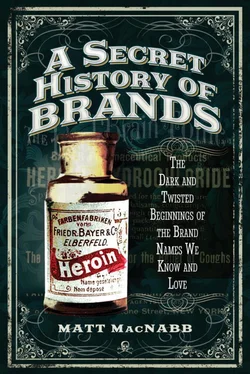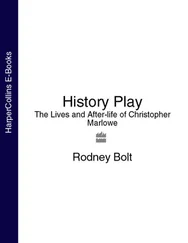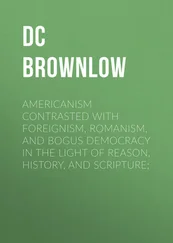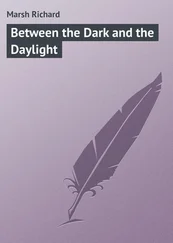The newlywed couple moved to a large stone house on Prospect Street in New Haven, very close to the Winchester factories. This was during the turbulent era of the Civil War (1861–1865). From the balcony on the back of her home, Sarah could see the factories where the arms were made. The war kept William quite busy with the Winchester Repeating Arms business and Sarah longed for the end of the war, because she understandably wanted more time with her new husband. The couple would have one child, a little girl named Annie Pardee Winchester, born on 15 June 1866. Tragically, baby Annie would only live a short time, dying on 24 July 1866.
The day that Annie was laid to rest, it is said that a terrible storm raged, complete with a dramatic tinge of thunder and lightning, as though Sarah’s emotions could almost govern the weather. Her grave read simply ‘Babie Annie’ and now lies next to her two parents in Evergreen Cemetery. Sarah and William’s infant daughter died of a condition known as marasmus, which was untreatable at the time. Modern medicine now associates marasmus with a protein deficiency known as kwashiorkor.
Tragedy would again strike the Winchester household fifteen years later, when William began to show signs of illness. He was working hard, nearly around the clock, so Sarah could have assumed that exhaustion and stress played a role in his wellbeing, but there was more to it than that. It took years of slowly wasting away, but William fell seriously ill and died on 7 March 1881. The legend goes that on the day of his funeral, there was thunder and lightning in the sky yet again.
Sarah was left alone in a large, cold, dark home overlooking the Winchester factories where her husband spent a good portion of their married life, and which she may very well have blamed for his eventual death. They stood like grisly beacons, continuing to make instruments of death on a daily basis. Sarah Winchester would be the sole heiress to her husband’s full estate, a fact that would leave her wealthy beyond the wildest dreams of most, but Sarah was so haunted by the death of her family that she couldn’t enjoy it.
The legend goes that Sarah, obsessed with death and desperately seeking contact with her deceased husband, fell into company with a medium from Boston named Adam Coons. It is also said that she had an interest in the occult and believed that she could communicate with the dead through Coons. In 1884 she placed an urn on the graves of William and Annie that said: ‘Hearts are dust. Heart’s love remains. To live in the hearts we leave behind is not to die.’
Legend further tells us that Coons helped Sarah establish total communication with William in the afterlife. Hoping for words of love, she was disappointed by a gloomy and dark message from the tortured spirit of her husband. William’s ghost told Sarah that she would be forever haunted by the spirits of those killed by the Winchester rifle. The spirits had also decreed that the Winchester family needed to provide them with a final resting place. William then told her to build a house that would never be completed, with infinite rooms that would provide shelter for the spirits. Sarah believed that by doing this she would gain immortality. This is the legend, and the basis for much of the thought about the motivations of Sarah Winchester and her ‘mad’ mystery home. How much of this is actually true? Surprisingly little, it turns out.
I spoke to Sarah Winchester’s biographer Mary Jo Ignoffo about the reality of Sarah’s life and she had a vastly different picture to paint. Mary Jo spent five years researching Sarah Winchester’s life for her book Captive of the Labyrinth: Sarah L. Winchester, Heiress to the Rifle Fortune . Mary Jo slaved over a ton of first-hand information from sources such as letters that Sarah had exchanged with her attorney; the daybooks of her ranch foreman John Hansen; and property deeds from Santa Clara and San Mateo counties. Interestingly, when I questioned Ignoffo about Sarah’s relationship with medium Adam Coons, the pivot-point for the entire legend, she informed me that in all of her research she had never been able to locate a record of a medium by that name. It wouldn’t be surprising if a recently widowed woman with a fortune at her disposal was preyed upon by a number of characters looking to pedal spiritual advice for a price, but I also couldn’t locate any actual evidence of one named Adam Coons.
Sarah soon travelled to Santa Clara valley in San Jose, California, where she bought forty-four acres of land and an eight room farmhouse that was under construction. It is said that the townsfolk watched in awe as Sarah brought many wagons of materials, at all times of day and night, to build her ambitious new home. Sarah spoke only to the architects and the carpenters on any regular basis and she was regularly dressed in black mourning clothes and a veil, which would be traditional grieving garb for the era.
The ‘mystery home’ of Sarah Winchester would finally settle with an astounding 160 rooms, 110 of which are currently available for the public to view on regular tours that are still held there. The house is an Eastlake shingle Queen Anne design that would end up costing Sarah more than five million dollars to construct. The building work wouldn’t actually end until Sarah’s death on 5 September 1922.
The crews of carpenters and masons worked day and night for several years. After a time, Sarah fired her architect, because she wanted to be fully in charge of providing the designs. The home looked like a typical Victorian mansion from the outside and fit well into the landscape of the town, but much to the surprise of the locals, it continued to expand and grow beyond expectations. Keeping in mind that no one in the local community had any idea about Sarah’s supposed premonitions, they only knew what they saw from a distance. The casual passers-by could see Mrs Winchester, still in mourning, lurking around the extensive grounds, but they say that she never acknowledged or spoke to anyone on the outside. She remained an enigma, keeping fairly secluded, not socialising much with the locals.
Mary Jo Ignoffo also provided some insight into how Sarah was perceived by the local San Jose community: ‘At the time, Sarah Winchester was perceived as building an excessively large and decorous house and as not ‘going in’ with the neighbors (quote from newspaper). A few very close neighbors visited her property and occasionally did favors for her.’
Sarah may have been in deep mourning and isolation, but she did enjoy the inheritance worth nearly twenty million dollars, plus an income from the Winchester Repeating Rifle Company profits that would equal around $1,000 per day. Cost was clearly not an issue for Sarah and her bizarre home renovations reflect that fact.
The former workmen from the home would spread stories and rumours about what they saw while in the home, to the eager ears of the local townies. The interior of the home was a mysterious labyrinth of mazes. There were passageways connecting many of the rooms, which Sarah would use on a regular basis to move around the home unbeknownst to the staff. There were stray hallways and corridors that led nowhere. It is said that the layout was so unnerving that new servants didn’t like to stray from the known hallways. There is one particular seven-story staircase that was 9ft tall and had forty steps, each of those steps being only 2ins in height. This oddity is likely due to the severe arthritis that Sarah suffered from.
By the turn of the century, the house engulfed the outbuildings and stables on the land and any others were soon gone. All of the original eight rooms of the house had disappeared. She had to add a high fence to keep people out who came to get a look at her and the house. She even planted a high cypress hedge and hired gardeners to focus on the hedge to nurture it into a thick green wall to keep away prying eyes. Any request to see her or her servants was refused.
Читать дальше












